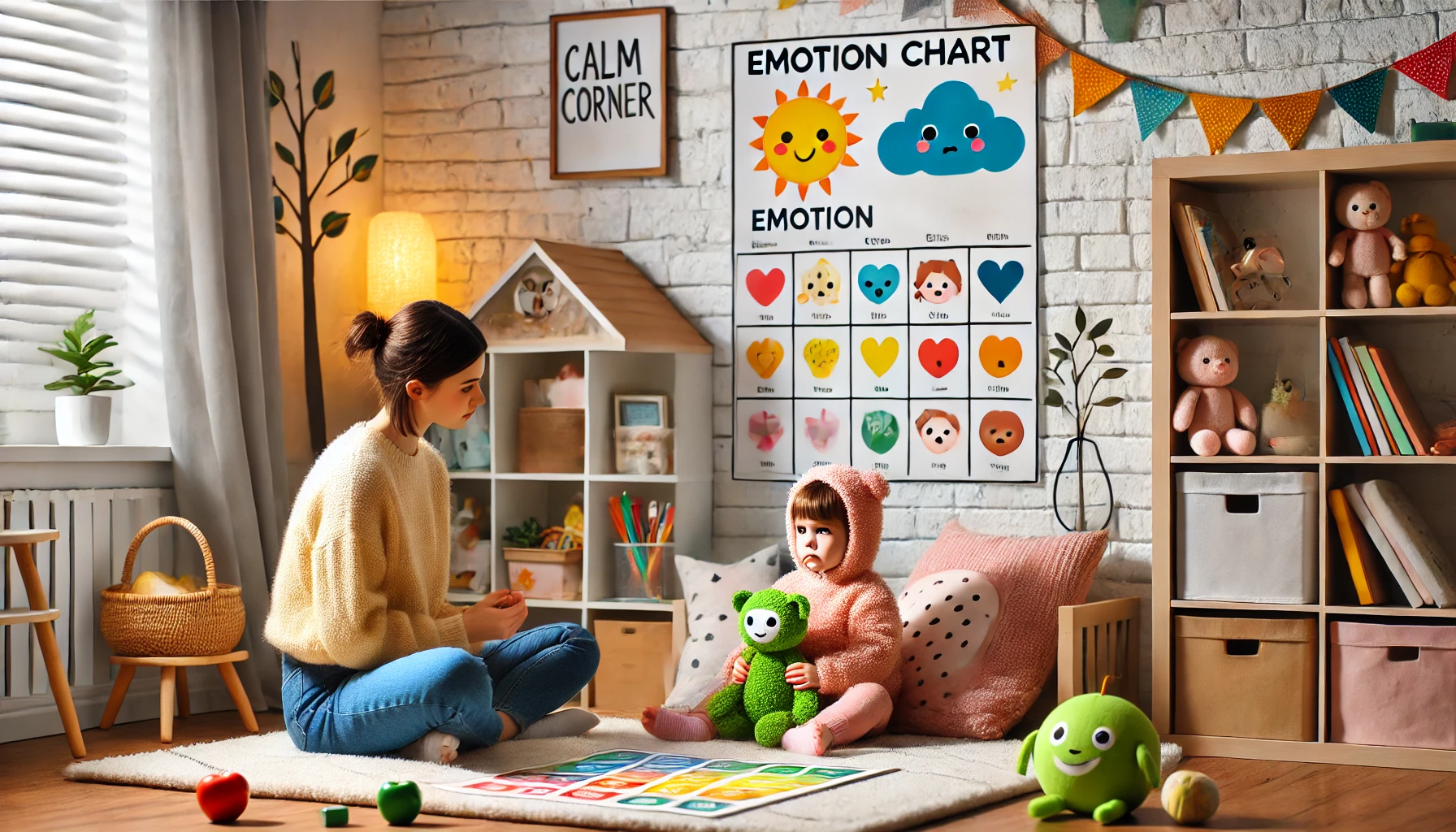Helping children understand and manage their emotions is one of the most important parts of early childhood education. Young kids experience big feelings but often lack the language and tools to express or regulate them. Teaching emotional intelligence in simple, supportive ways gives kids lifelong skills for resilience, empathy, and communication.
Why Teaching Emotional Health Matters
- Improves self-awareness and emotional vocabulary
- Reduces tantrums, frustration, and emotional shutdowns
- Fosters empathy and healthy relationships
- Promotes problem-solving and decision-making
- Builds long-term mental well-being and confidence
1. Teach Kids to Name Their Emotions
When children can label their feelings, they’re better able to manage them.
Activity Idea:
- Use an “emotion chart” with faces showing happy, sad, angry, scared, excited, etc.
- Ask: “Which face shows how you feel today?”
- Introduce new feelings gradually, like “frustrated,” “nervous,” or “proud.”
What Kids Learn:
- How to express their feelings with words.
- That it’s okay to have different emotions.
- That emotions can change throughout the day.
2. Use Books and Stories About Emotions
Children connect with characters who feel big feelings, too.
Activity Idea:
- Read books like The Color Monster or When Sophie Gets Angry—Really, Really Angry.
- Ask questions: “Why was the character mad? What helped them feel better?”
- Let your child act out feelings with puppets or toys.
What Kids Learn:
- That everyone feels big emotions sometimes.
- That feelings are part of every story.
- How to identify emotions in themselves and others.
3. Teach Simple Calming Techniques
Give your child tools to manage their feelings.
Activity Idea:
- Practice deep breathing: “Smell the flower, blow out the candle.”
- Create a “calm down corner” with soft pillows, books, or calming toys.
- Use a glitter jar or sensory bottle to help children refocus.
What Kids Learn:
- That they have power over how they respond to feelings.
- How to calm their bodies and minds.
- That taking a break is helpful, not a punishment.
4. Validate and Acknowledge Feelings
Children need to know their emotions are normal and accepted.
Activity Idea:
- Say: “It’s okay to feel sad. I’m here with you.”
- Avoid dismissing: “Don’t cry,” or “You’re fine.”
- Help them name what’s happening: “It sounds like you’re frustrated because the block tower fell.”
What Kids Learn:
- That all feelings are allowed.
- That they’re not alone when emotions feel big.
- How to feel safe while expressing themselves.
5. Role-Play Real-Life Scenarios
Let kids practice handling emotions through pretend play.
Activity Idea:
- Act out moments like “waiting for a turn,” “losing a game,” or “being told no.”
- Let your child play both roles: the one feeling big emotions and the one helping.
- Reflect: “What could we do next time instead?”
What Kids Learn:
- How to handle emotional moments with confidence.
- Empathy for others’ experiences.
- That problems can be solved in calm ways.
6. Talk About Your Own Feelings
Model emotional awareness for your child.
Activity Idea:
- Say: “I’m feeling a little frustrated, so I’m going to take deep breaths.”
- Let your child see you calm down or recover from stress.
- Share: “I felt proud of myself when I finished that project!”
What Kids Learn:
- That even adults have emotions.
- How to regulate feelings through healthy behaviors.
- That emotional honesty is safe and normal.
7. Encourage Positive Self-Talk
Help your child build an inner voice that supports them.
Activity Idea:
- Teach phrases like: “I can handle this,” or “I can try again.”
- Mirror affirmations: “You’re kind, brave, and growing every day.”
- Post positive messages on their mirror or wall.
What Kids Learn:
- How to build emotional resilience.
- That mistakes don’t define them.
- That confidence grows with kind thinking.
8. Celebrate Emotional Growth
Reinforce healthy emotional behavior with praise and reflection.
Activity Idea:
- Say: “You took a deep breath when you were mad—that was a great choice!”
- Use a “Feelings Star Chart” to track positive emotional habits.
- Reflect at the end of the day: “What feeling did you handle well today?”
What Kids Learn:
- That they’re making progress.
- That emotions are something they can work with, not fear.
- The satisfaction of emotional maturity.
Final Thoughts
Teaching young children to handle emotions in a healthy way sets the stage for a lifetime of strong relationships, good decision-making, and emotional intelligence. Through modeling, play, and supportive conversations, you give your child the tools to understand, express, and manage their feelings—so they can thrive, even when life gets big.
